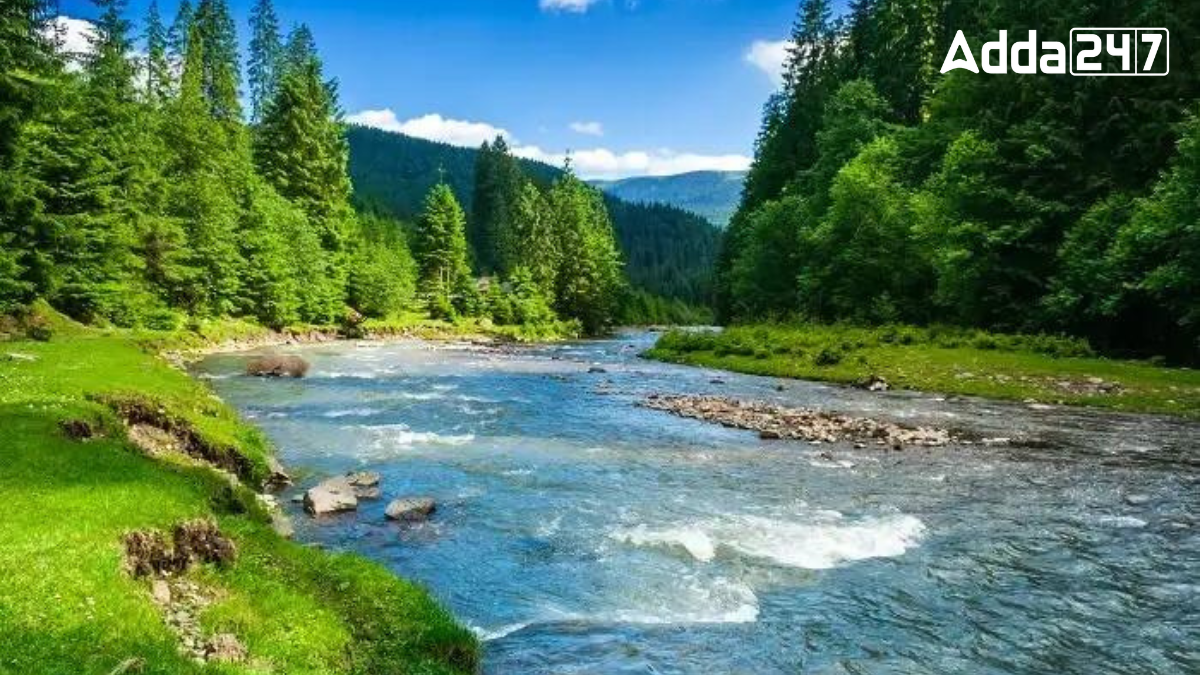The Mahanadi River is one of the major rivers in central and eastern India. Originating in the state of Chhattisgarh and flowing through Odisha, it holds significant cultural, economic, and ecological importance. Known for its historical relevance and extensive irrigation systems, the Mahanadi is a lifeline for millions of people in its basin.
Origin of Mahanadi River
The genesis of the Mahanadi River lies in the pristine mountain streams of Dhamtari, Chhattisgarh, where it springs forth at an elevation of 442 meters. From its humble beginnings, it courses through the landscape, spanning a length of about 900 kilometers before gracefully merging into the Bay of Bengal. This journey encompasses diverse terrains and landscapes, carving its path through the heartlands of Chhattisgarh and Odisha.
Length of Mahanadi River
The Mahanadi River, coursing through East-Central India, stretches approximately 900 kilometers from its origin in the Raipur district of Chhattisgarh to its confluence with the Bay of Bengal. Spanning diverse landscapes and regions, its journey of approximately 900 kilometers shapes the agricultural, industrial, and cultural landscapes along its course, making it a vital lifeline for millions of people in the region.
Course of Mahanadi River
The journey of the Mahanadi River unfolds in three distinct phases: the upper, middle, and lower courses.
- Upper Course: In its upper course, the Mahanadi is nurtured by various mountain streams, gradually coalescing into a formidable force. It meanders through the northern reaches of Chhattisgarh, draining the district of Raipur. The valley, with an elevation between 500 and 600 meters, witnesses the river’s initial flow, setting the stage for its journey ahead.
- Middle Course: As the river progresses eastward, it encounters the confluence with tributaries like Shivnath, Jonk, and Hasdeo, gathering momentum before entering Odisha. Notable landmarks along this stretch include the Hirakud dam, a testament to human ingenuity in harnessing the river’s potential for irrigation and power generation.
- Lower Course: The lower course of the Mahanadi sees its transformation into a distributary-rich delta as it nears the Bay of Bengal. Tributaries like Kathjori give birth to a network of streams, enriching the fertile plains of Odisha. The grand entrance of the river, marked by channels near Paradeep, underscores its significance as a provider of sustenance and livelihood for the region.
Tributaries of Mahanadi River
The Mahanadi River, with its vast network of tributaries, is a testament to the interconnectedness of river systems. From the Seonath originating in the Panabaras hills to the Tel, known as the second-largest river in Odisha, these tributaries enrich the main artery of the Mahanadi, shaping landscapes and ecosystems along their courses.
Left Bank Tributaries
- Seonath
- Hasdeo
- Mand
- Ib
Right Bank Tributaries
- Tel
- Ong
- Jonk
Significance of Mahanadi River
The Mahanadi River, with its rich history, cultural significance, and economic importance, occupies a central position in the lives of millions of people. Its waters sustain agriculture, provide hydroelectric power, and facilitate transportation and industry. Moreover, the river’s cultural significance is evident in its association with pilgrimage sites like Puri, drawing devotees from far and wide.




 What was the Old Name of Goa? Know About...
What was the Old Name of Goa? Know About...
 Top-10 Most Searched Words in 2025, Chec...
Top-10 Most Searched Words in 2025, Chec...
 Which Crop is known as the Backbone of I...
Which Crop is known as the Backbone of I...







